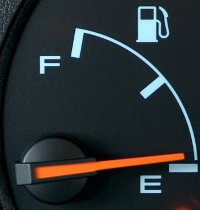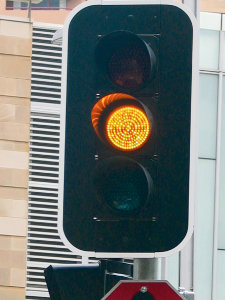 Increasing numbers of drivers are running out of fuel on the UK’s motorways as they try to avoid using motorway service are fuel prices, according to new research from Halfords.
Increasing numbers of drivers are running out of fuel on the UK’s motorways as they try to avoid using motorway service are fuel prices, according to new research from Halfords.
According to the Highways Agency, 43 cars a day typically run out of fuel on major roads – sometimes in the outside lane of a motorway. One Highways Agency traffic officer has seen first hand the carnage and danger that can result from this and recently vented his frustration on a motoring website.
He revealed that in just one day, a man who ran out of fuel was killed as he attempted to cross three busy lanes to reach his stranded car, closing a motorway for four hours. Two other men were picked up from the hard shoulder attempting to walk two miles to a service station and a woman driver with two children also had to be rescued after running out of petrol.
The anonymous officer added:
“That was only a few from today. There were probably at least two-dozen others, and that’s on a Sunday, just in the North West. Personally I’d fine them heavily.”
The interesting thing is that Halford’s research has shown that the average fill up amount is still £30 – it has not risen to keep up with the 16% rise in petrol prices that we’ve seen over the last year. This means that people are putting in less fuel than they used to each time they fill up, increasing the risk of running out of it. This is not just theorising, either – Halfords has seen a 56% increase in sales of fuel cans over the last six months.
Click here to find the cheapest petrol and diesel prices in your area
If you are driving a rental van that you are not familiar with, take extra care not to push your luck with the fuel gauge – it really is not worth the hassle, even if it does result in you leaving a little extra diesel unused when you return the van to the hire company.
False Economy
It is worth noting that although petrol and diesel prices on motorways are much higher than at supermarket garages, the difference does not really matter that much if you only put a small amount in. For example, let’s say you are nearly at your destination but the fuel needle is virtually at empty.
Put in 5 litres at a motorway garage and even if it costs 10p per litre more than you usually pay, you will only pay 50p extra – the price of a Mars Bar. It’s a lot better than risking running out of fuel and five litres will probably take you another 30 miles or more, depending on your car’s fuel consumption (1 gallon is 4.54 litres, so with 5 litres you should be able to do the same number of miles your car does to the gallon).
The other thing that’s worth remembering is that none of us has perfect judgement and sometimes we do cut fuelling a bit fine – if you are on a motorway and find yourself short of fuel, put yourself in the inside lane and drive at the same speed as the lorries (56mph). This will improve your fuel consumption significantly, reducing your chances of running out of fuel before the next filling station.
Running On Empty Likely To Suck Dirt Into Your Engine
The other problem with driving a car with an almost-empty fuel tank is that most cars’ petrol tanks have a bit of gunk and dirt at the bottom. Normally, this does not cause any problems as clean fuel from above it is sucked into the fuel pump. However, if you are running on fumes, then the dregs of your tank – dirt and all – will be sucked into your engine’s fuel system, increasing the chance of a problem or breakdown.
Bill Collins, Technical Manager at Halfords Autocentres, explains:
“Leaving fill ups until the warning light is glowing not only leaves you at risk of being stranded but of also damaging your engine. Most fuel tanks contain some contaminants and these are at risk of being ingested if the tank is allowed to run dry. Blocked fuel pipes, damaged injectors and burnt out fuel pumps can lead to unnecessary repair bills, with modern diesel engines being most vulnerable.”
The Highways Agency standard fee for recovering cars that have run out of fuel on the motorway is £170. It’s a bit more than the £1 or £2 extra you might spend if you fill up properly before you set off on your journey.

 Increasing numbers of drivers are running out of fuel on the UK’s motorways as they try to avoid using motorway service are fuel prices, according to new research from Halfords.
Increasing numbers of drivers are running out of fuel on the UK’s motorways as they try to avoid using motorway service are fuel prices, according to new research from Halfords. A new survey by
A new survey by